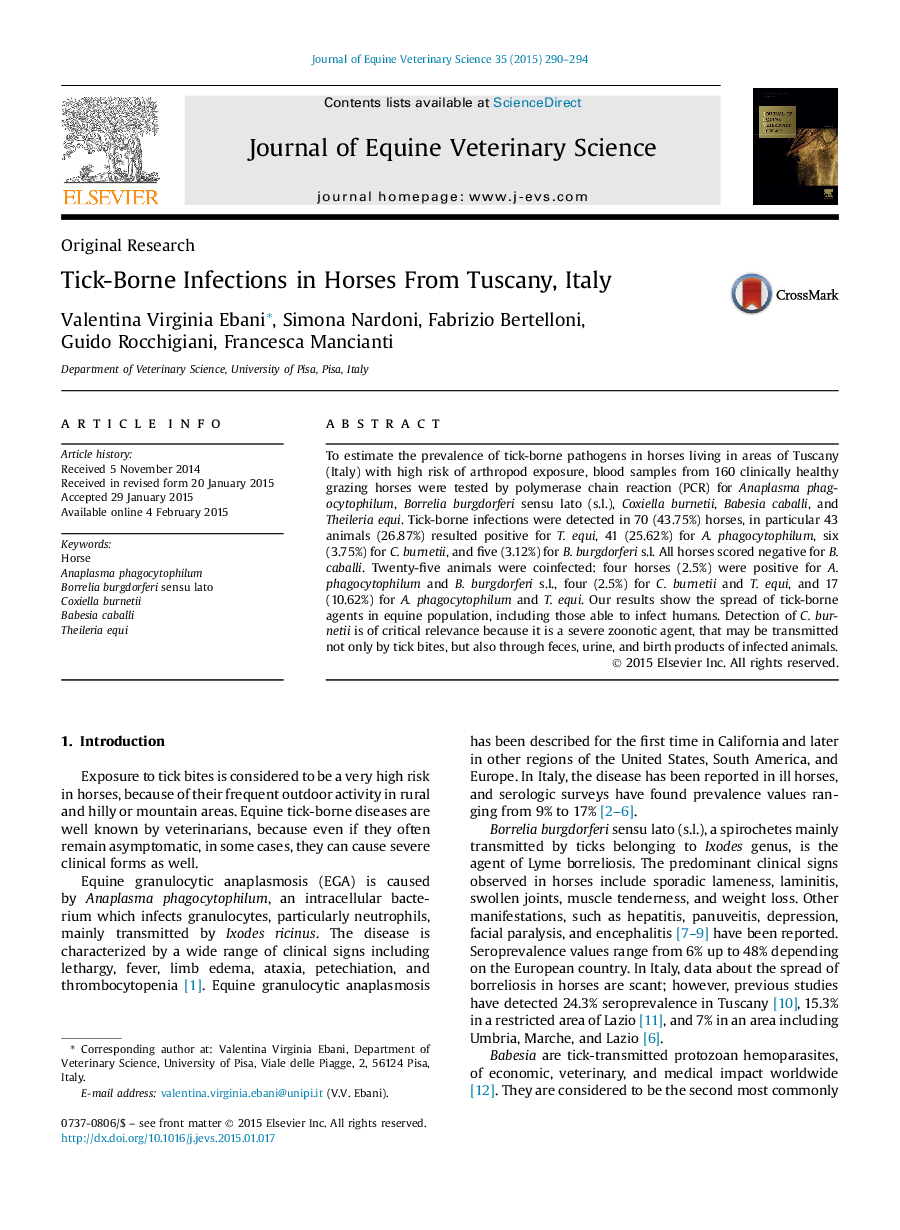| Article ID | Journal | Published Year | Pages | File Type |
|---|---|---|---|---|
| 10961243 | Journal of Equine Veterinary Science | 2015 | 5 Pages |
Abstract
To estimate the prevalence of tick-borne pathogens in horses living in areas of Tuscany (Italy) with high risk of arthropod exposure, blood samples from 160 clinically healthy grazing horses were tested by polymerase chain reaction (PCR) for Anaplasma phagocytophilum, Borrelia burgdorferi sensu lato (s.l.), Coxiella burnetii, Babesia caballi, and Theileria equi. Tick-borne infections were detected in 70 (43.75%) horses, in particular 43 animals (26.87%) resulted positive for T. equi, 41 (25.62%) for A. phagocytophilum, six (3.75%) for C. burnetii, and five (3.12%) for B. burgdorferi s.l. All horses scored negative for B. caballi. Twenty-five animals were coinfected: four horses (2.5%) were positive for A. phagocytophilum and B. burgdorferi s.l., four (2.5%) for C. burnetii and T. equi, and 17 (10.62%) for A. phagocytophilum and T. equi. Our results show the spread of tick-borne agents in equine population, including those able to infect humans. Detection of C. burnetii is of critical relevance because it is a severe zoonotic agent, that may be transmitted not only by tick bites, but also through feces, urine, and birth products of infected animals.
Keywords
Related Topics
Life Sciences
Agricultural and Biological Sciences
Animal Science and Zoology
Authors
Valentina Virginia Ebani, Simona Nardoni, Fabrizio Bertelloni, Guido Rocchigiani, Francesca Mancianti,
